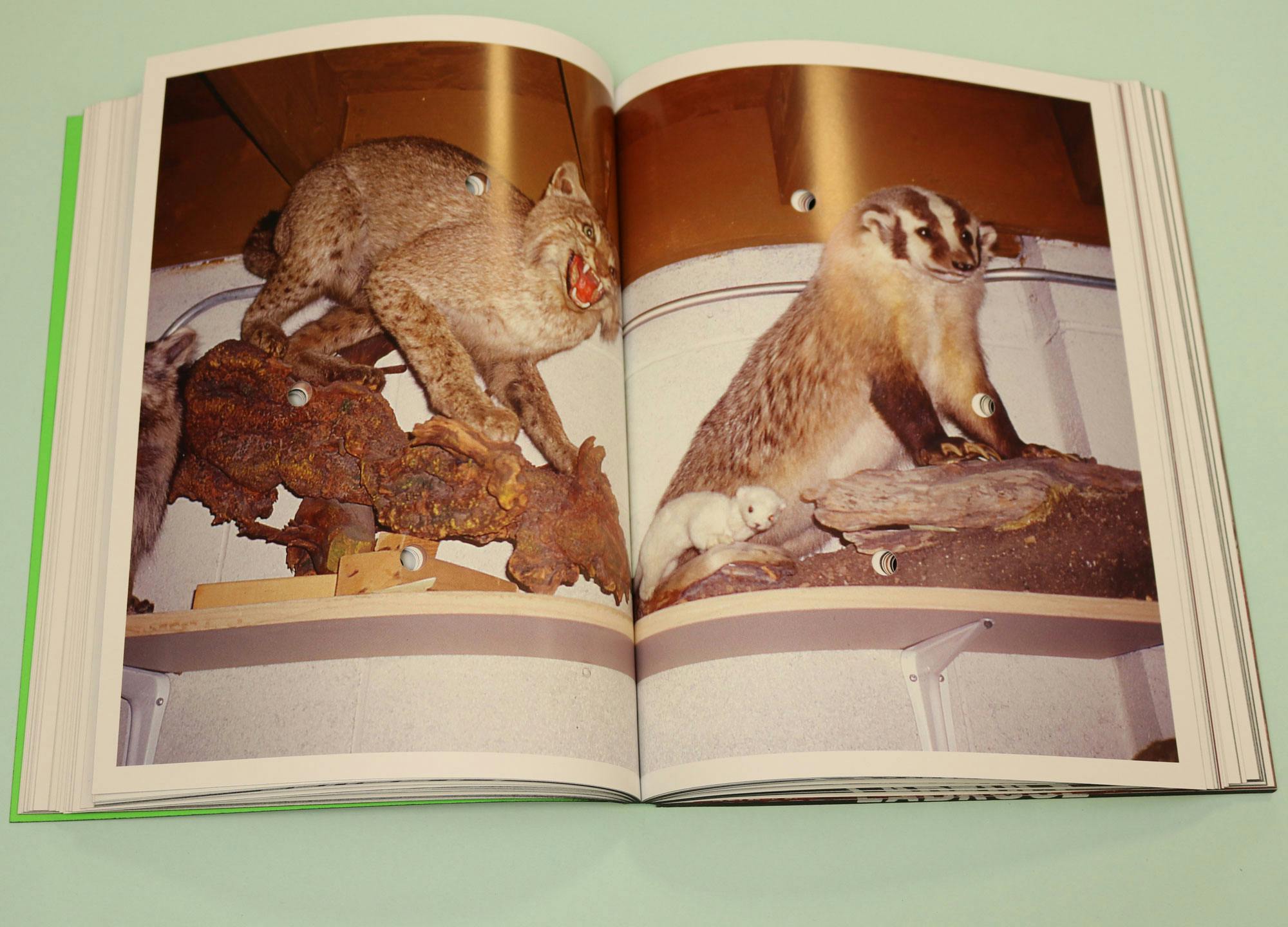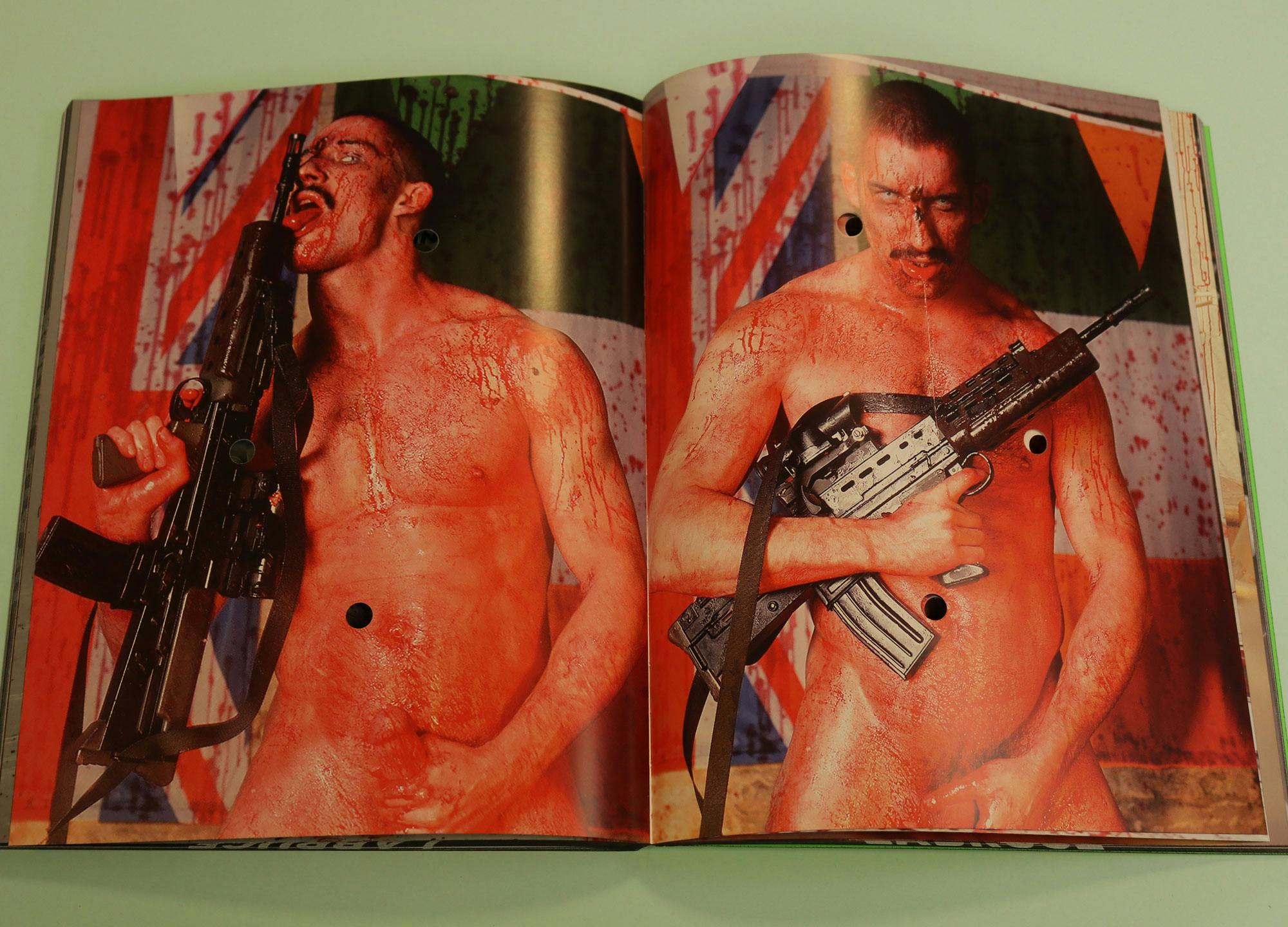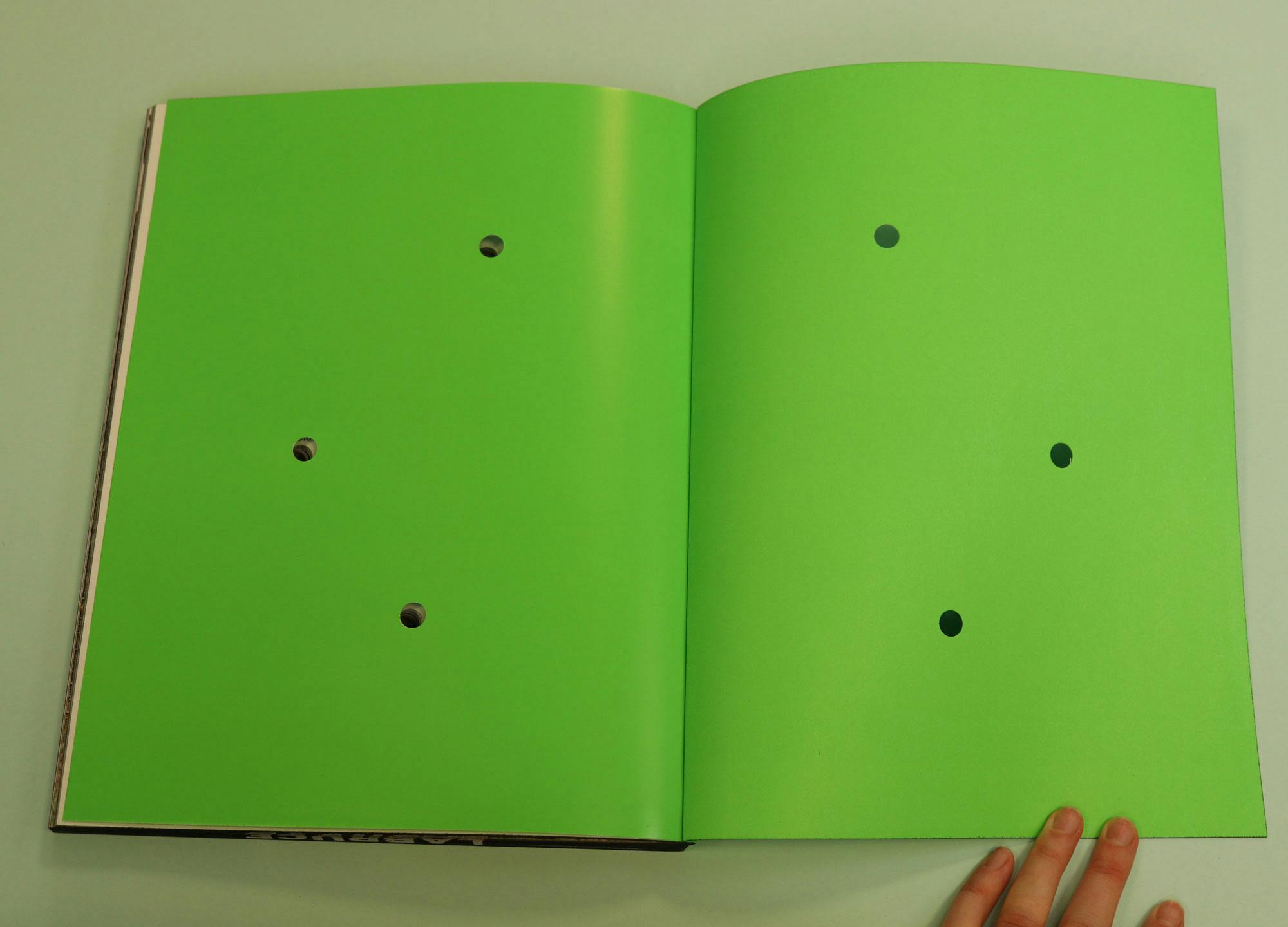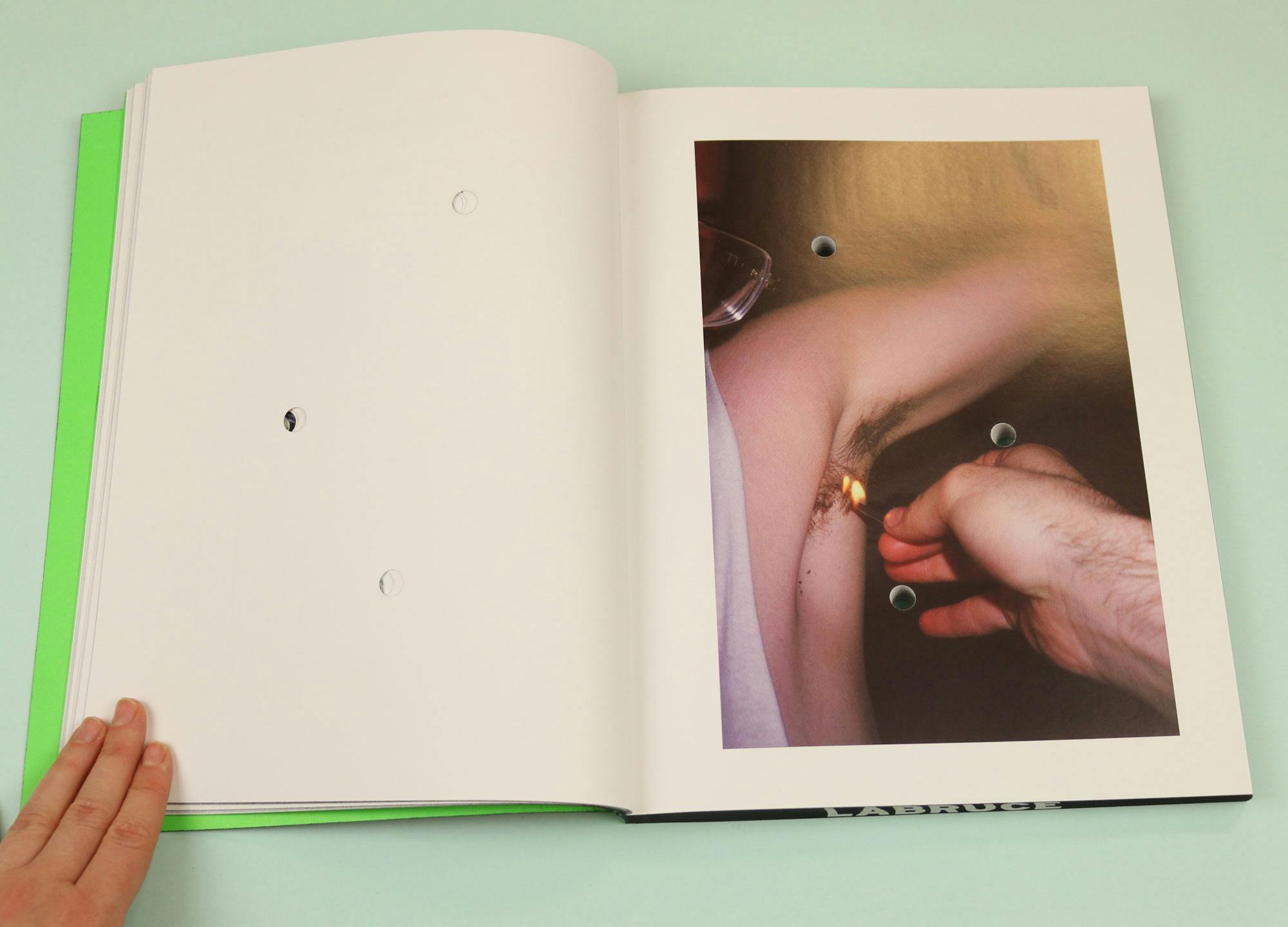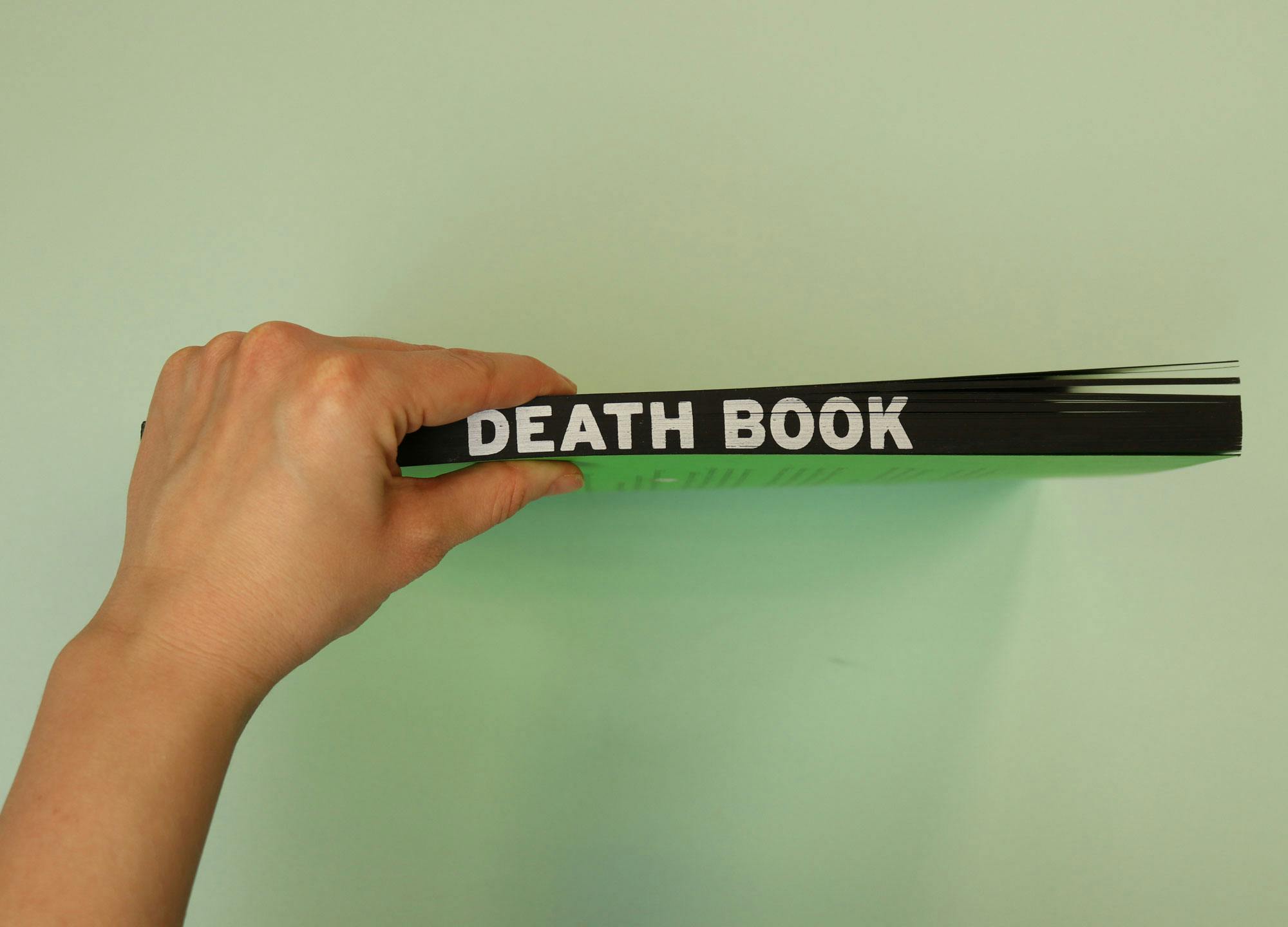Death Book
The Death Book, from sex magazine Baron, explores photography’s relationship to death. This edition is by the iconic gay director Bruce LaBruce, who explores queer subcultures and pornography as tools of political dissent and liberation. LaBruce’s films — which have been picketed in London and banned in Australia — are extraordinary and subversive. In Skin Flick (1999), we see a neo-Nazi skinhead masturbating over a copy of Mein Kampf; in LA Zombie (2010), an alien brings dead bodies back to life by inserting his penis into their mangled hearts.
Importantly, LaBruce’s work, even at its most horrifying, is always extremely sexy. Labruce’s 1991 debut, No Skin Off My Ass, (reportedly Kurt Cobain’s favourite film), includes a sex scene which Dr. Thomas Waugh, Mel Hoppenheim School of Cinema professor, has called “the hottest scene in world film history”.
At his gallery openings, LaBruce often recreates scenes of terrorist abduction and torture, inviting visitors to ritualistically drench themselves in fake blood. The idea, LaBruce explains to me via zoom, is to “act out these horrible images, [so] you get to experience difficult feelings in a controlled environment.” Horror, like porn, is “almost like a collective unconscious, in that it allows expression of a dark sexual imagination”.
LaBruce started out in print, making JD’s, a queer punk zine he co-founded in 1985, designed to point out the latent homosexuality among skinhead subcultures. In the Death Book — which includes contributions from Palm d’Or-winning director Lars von Trier, Golden Lion-winning director Roy Andersson, and Turner Prize-winner Damien Hirst — LaBruce makes a glorious return to the form.
The magazine, which was designed by Max Siedentopf, is thick and bloody. Six ‘bullet holes’ drill through the pages, calling attention to The Death Book’s existence as a physical object, and a memorial. In his introduction to the issue, the Russian artist Slava Mogutin reminds us that, given the global population is 7.8 billion, “those of us currently alive represent about seven per cent of the total number of humans who have ever lived. That means those of us who are still undead are vastly outnumbered by the dead ones.” The very first page of The Death Book features a photograph of the late actor Brad Renfro, LaBruce’s friend, who died at 25 of a heroin overdose. Other dead people feature on these pages: Genesis P.Orridge and Lady Jaye; the artist Will Munro; Nico.
Below, LaBruce talks about repression, violence, and why porn is art.
You’ve said of JD’s, the queer punk zine you co-founded in 1985, that it was “designed to provoke the punks — to point out how homoerotic they were and how they internalize homophobia as a way of repressing homosexual desire.” Can you talk a little about the power of exploring repressed homosexual desire?
Well, my interest started out with the hardcore punk scene in the late eighties in Toronto. I’d go to hardcore shows all the time in the eighties and the moshpit was full of these straight skinheads, some of whom were homophobic — but they had their shirts off and were sweaty and they had their hands all over each other. It was obviously homoerotic, but they would deny that it was homosexual. We kindly pointed out to them via our fanzines and our super eight movies that they were gay.
I love that!
Because there were all these hot skinheads on the scene, I kind of developed a fetish for them. In old school gay terms we sexualise oppressive authoritarian figures, like cops, or sailors, or army officers. Or even neo-Nazi skinheads. It’s also very personal, because I had a boyfriend at one time who was a hustler. He wasn’t gay identified: he was gay for pay. We split up, and I ran into him a year later and he’d become a fully fledged neo-Nazi skinhead. I couldn’t believe it! He’d gone from this lefty Two-Tone/No Wave-head, to extreme right: shaved head, tattoos, the boots and everything. He was homeless, so I let him stay with me for a while. I couldn’t believe he was serious about his neo-Nazi beliefs, I was trying to talk him out of it. One day, he beat the shit out of me outside my apartment. If sexually you are engaged in ideas of domination and submission, those experiences can become sexually charged. For me, that is the function of porn: there are a lot of dark fantasies in porn that are politically incorrect, but it’s better to work them out there than have them play out in real life. For me, the function of porn is almost like a collective unconscious, in that it allows expression of a dark sexual imagination.
You’ve said that “as an unapologetic Freudian, I’ve always recognised the power of the sexual imagination. If it’s repressed it becomes deadly and monstrous”. Is this part of why you include gore in your work?
At university, I studied with the film critic Robin Wood, a Marxist, feminist, gay liberationist. He wrote The American Nightmare in 2001, about horror, slasher, and splatter movies from the seventies. Robin’s thesis was about the ‘return of the repressed’; that homosexuality, when repressed, will come back in some sort of explosion of violence. I have a theory that a lot of horror is homosexual panic; a character recognises that they have homosexual impulses and it drives them crazy. Psycho and Strangers on a Train are obvious examples of films with coded gay characters. They end up becoming psychopathic killers. In the seventies film was analogue, so in order to create gore you had to play in the muck and the fake entrails and the fake blood. There’s something cathartic about that. There’s that famous scene in Alien when the alien comes out of the chest. Ridley Scott didn’t tell the actors what was going to happen, and you can actually see the horror on their faces. It also looks like they’re trying not to laugh. That spirit of play is part of the pleasure of gore and splatter, and that’s the spirit I do my live performances in. People are eager to act out these horrible images; you get to experience difficult feelings in a controlled environment.
Humour feels to me to be a massive part of your work. I re-watched Skin Flick the other day and found it so funny. Almost slap-stick in parts. Can you talk about the role of humour in your work? And in the Death Book?
Many of the photos in the book were taken at a gallery opening of mine: I created a bloody aftermath of a murder, and had performers posing in bed with members of the public. It’s playful and there’s something camp about that. Similarly, in Skin Flick, we see a neo-Nazi jerking off to Mein Kampf, and there’s something camp about that too. Mein Camp, I guess! It’s a joke but it’s a pretty serious joke. It’s a joke that really pushes the boundaries of what you can laugh at. It’s complicated the way humour can be used.
Your work muddies the lines between art and porn. Do you see a distinction between art and porn at all?
In the seventies straight porn was made on 35 mm film and gay porn was made on 16 mm. That distinction was because of budget; 16 mm was cheaper and gay porn had a smaller budget. All porn had to be made by filmmakers, so there was a craft to it which showed in the final product. With the advent of digital, porn became more democratic. You didn’t need to know how to operate a camera or do a lighting setup, so narrative porn became less common, which was a pity because the narrative is where a lot of the eroticism comes from. Some of my biggest influences are the great art porn makers from the seventies like Jack Deveau, Joe Gage, Wakefield Poole, and Peter de Rome, who borrowed techniques from underground film. Porn is a medium used by artists and storytellers to interpret sexuality. So I do consider porn an art form.
You started out making fanzines. What did it feel like returning to print for the Death Book?
I haven’t done a photobook for 12 years. I worked very closely with Max Siedentopf, the designer. It was at the beginning of lockdown, so it was something to really sink our teeth into, and I went through my archives. It does bring me back to my fanzine days. The thing about making fanzines in the eighties was that we became Jacks and Jills of all trades. We did the photography, the writing, the layout, the cut-and-paste, the collages, the comics, everything. It was a multidisciplinary thing and I consider all of those mediums to be part of my creative process. There’s something about the book, about the tactile nature of it. The bullet holes through the Death Book draw attention to that physicality. It’s something you can stick your fingers into. You can hang it on the wall. It’s an obvious object that you take pleasure in.
I do miss that tactility, even when I’m making films. I was lucky enough to make my early films on film, and I would have the old bins in the editing room with all the strips of film where you had to dig your hand in and search for a particular scene or strip of film. There was something very hands-on about that. The whole process of digital can be a bit cold. There’s a depth and texture to film and print.



